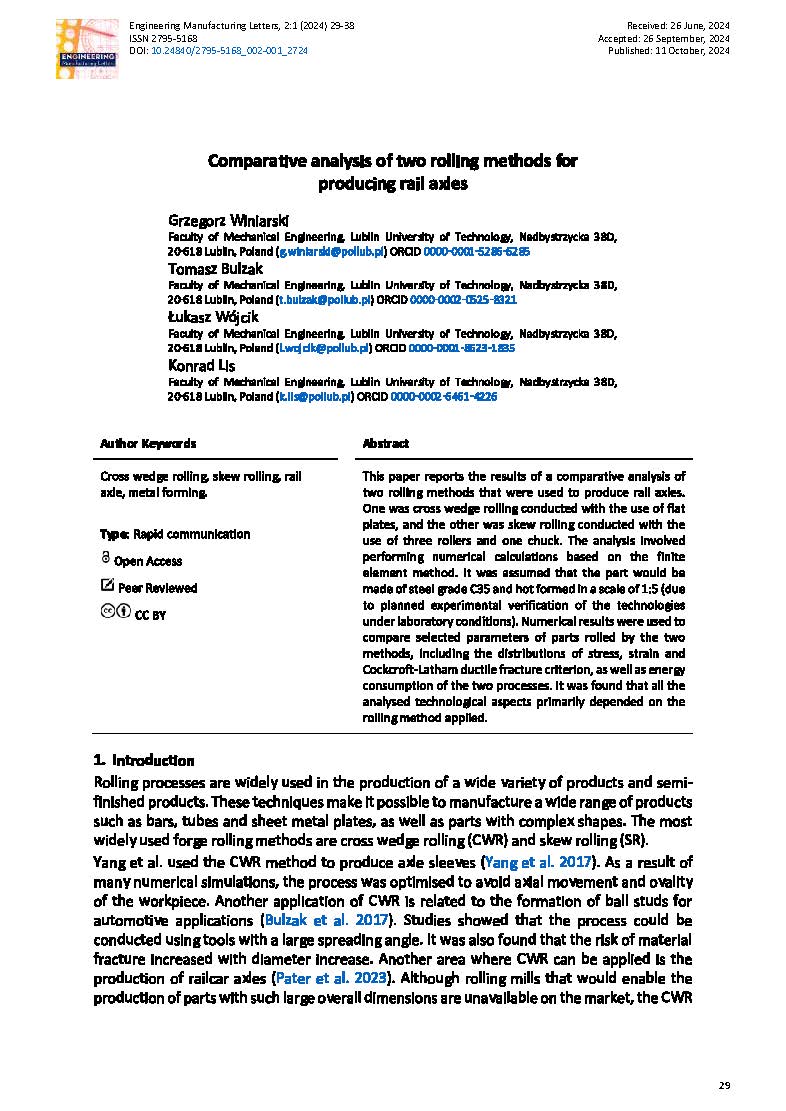Comparative analysis of two rolling methods for producing rail axles
Main Article Content
Abstract
This paper reports the results of a comparative analysis of two rolling methods that were used to produce rail axles. One was cross wedge rolling conducted with the use of flat plates, and the other was skew rolling conducted with the use of three rollers and one chuck. The analysis involved performing numerical calculations based on the finite element method. It was assumed that the part would be made of steel grade C35 and hot formed in a scale of 1:5. Numerical results were used to compare selected parameters of parts rolled by the two methods, including the distributions of stress, strain and Cockcroft-Latham ductile fracture criterion, as well as energy consumption of the two processes. It was found that all the analysed technological aspects primarily depended on the rolling method applied.
Article Details

This work is licensed under a Creative Commons Attribution 4.0 International License.

